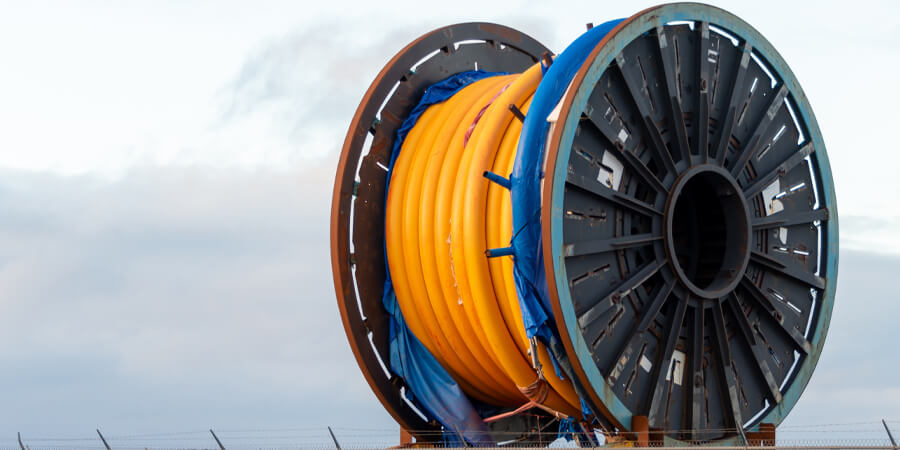The internet has become an integral part of our lives, allowing us to connect with people and information from around the world. What makes this global connectivity possible is the vast network of subsea cables traversing the ocean floor, transmitting data at the speed of light through narrow glass fibers. These cables, as thin as a garden hose, are technological marvels capable of carrying copious amounts of data, and they are the essential infrastructure behind our online lives.
The Backbone of Global Interactions
Although the cables are state-of-the-art technology, their installation process is surprisingly low-tech. Coated in tar and laid by ships, the process dates back to the 1850s, when the first transatlantic telegraph cable was laid. The cables have come a long way since then, and today they are the backbone of global commerce and communication, responsible for more than 99% of traffic between continents.
Tech giants like Meta, Microsoft, Amazon and Google not only provide the “brains” of the internet through their data centers but also increasingly control the internet's nervous system through these very subsea cables. Their data demands are staggering, with hyperscalers' subsea cables seeing a surge of 45 to 60% in data traffic per year. As the world's hunger for content and connection continues to grow, the infrastructure must keep up.
The Adaptability of the Subsea Cable Network
Building a resilient subsea cable network is critical. The first subsea cables connected major communication routes, of course, but now newer routes are extending the network to far-off and remote places. Subsea cables are becoming a world-spanning mesh and are becoming ever more reliable and capable, thus coaxing more countries to join the global internet network.
Despite the many benefits of subsea cables, there are also risks. The cables are vulnerable to damage from fishing equipment, anchors and even geopolitical tensions. Repairing cut cables is a complicated process, and downtime can last weeks or even months, disrupting communication and internet services.
The Growing Need for Data
To accommodate the increasing demand for data, new subsea cables with faster speeds are being built. Hyperscalers like Microsoft are investing in new technologies, such as hollow fibers, to reduce latency and improve network performance. Additionally, multiple data transmission cores inside fibers are being explored to further increase cable capacity.
Geopolitical tensions can also affect subsea cables, with certain countries exercising control over the installation and maintenance of cables in their territorial waters. However, the economic incentives for building these cables usually prevail, as countries want to be part of the interconnected world.
The Creation of Subsea Communications
In the present day, subsea cables can transmit up to 250 terabits per second of data, but the roots of their technology can be traced back to the 1800s. It was during this time that pioneers like Werner Siemens, a renowned scientist and engineer, made significant strides in laying telegraph cables under rivers, the English Channel and the Mediterranean Sea. However, the early attempts were fraught with failures, as the weight of the cables resting on the ocean floor coupled with the immense pressure caused them to tear apart.
Undeterred, investors saw the immense potential of rapid communications and decided to invest in the development of improved technology. Through such support, advancements were steadily made. Higher copper purity enhanced signal transmission; stronger protective sheathing reduced cable breaks; strategically placed repeaters bolstered signal strength; and polyethylene insulation replaced the earlier rubber-like material obtained from gutta-percha trees.
The evolution of subsea communications continued with the transition from telegraph messages to telephone calls. Notably, in 1858, the first successful transatlantic cable project operated for a mere three months, managing to transmit only slightly more than one word per minute.
As technology progressed, so did the capabilities of subsea cables. By 1973, a transatlantic cable was capable of handling 1,800 simultaneous conversations. Further advancements were made in 1988 when AT&T installed the first transatlantic cable using glass fiber optic strands, a revolutionary innovation that boosted its capacity to handle a staggering 40,000 simultaneous phone calls. And today, we are witnessing unprecedented expansion, both in terms of the infrastructure itself as well as the data it transmits.
Despite its historic challenges, the subsea cable network is growing more robust and resilient at a seemingly breakneck pace. The geographic diversity of new landing sites and improved branching technology are making the network more reliable and less susceptible to disruptions. As the internet continues to enrich our lives, the subsea cables remain the lifeblood of the global economy, ensuring seamless connectivity and access to information worldwide.
